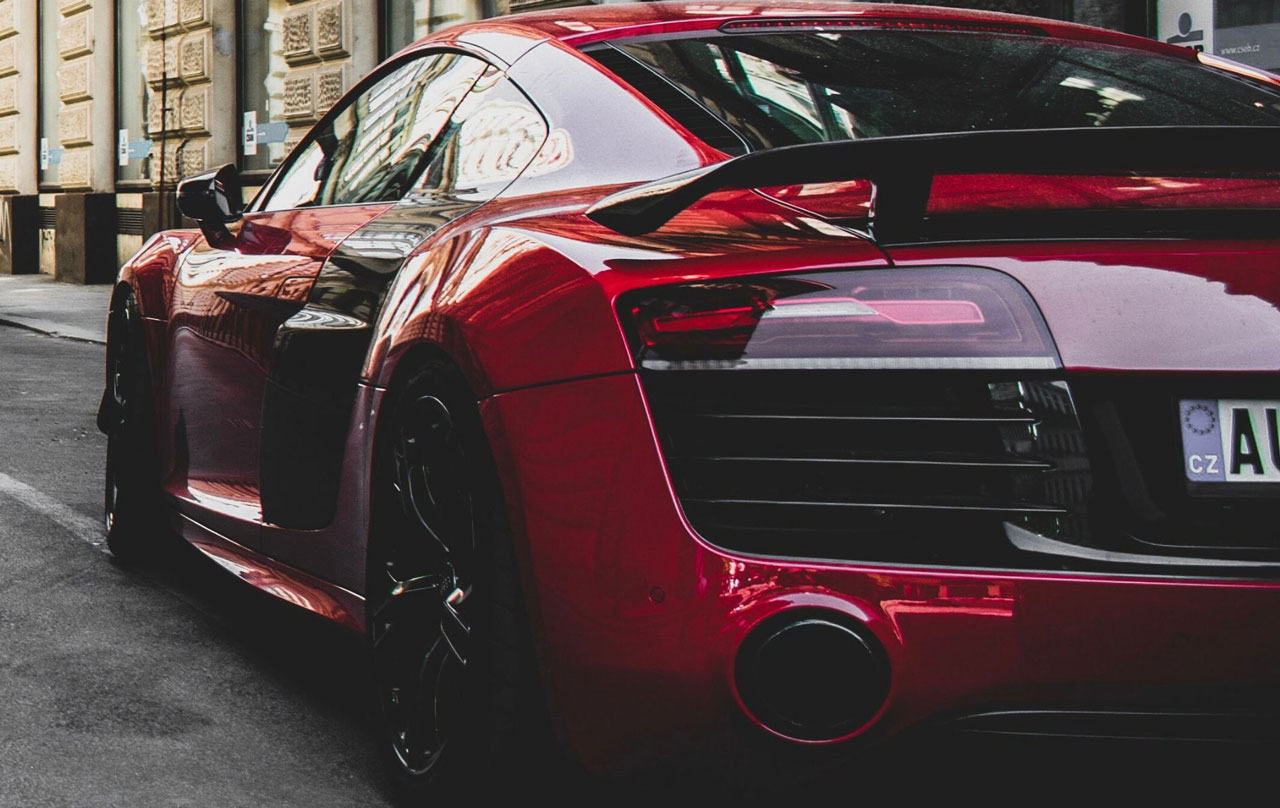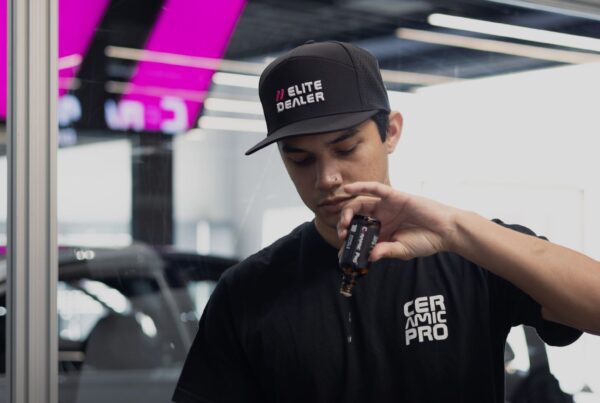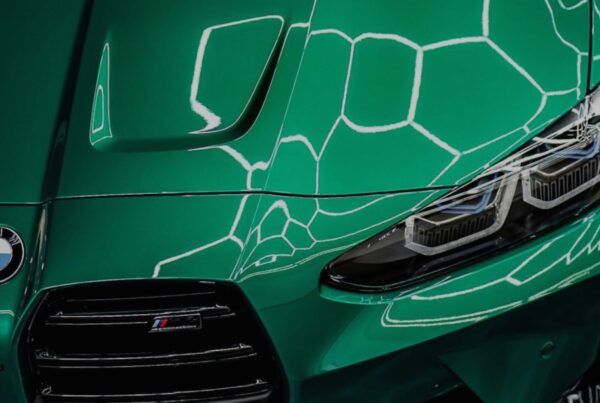In the car paint protection world, there are several ways to skin a cat – or better yet, apply a sacrificial layer of skin on the car’s paint. The leader in the clubhouse is a ceramic coating. But, not all DIY ceramic coatings for cars are identical. In fact, there is a plethora of imitation products that simply replicate some of the attributes that a professional-grade nano ceramic coating produce.
Let’s clarify something from the start. The term ‘ceramic’ refers to inorganic, non-metallic, often crystalline oxide, nitride, or carbide materials. That’s a large and rather generic grouping of ingredients. If an ingredient in a formulation is classified as ceramic – then an automotive protective coat can be called a ceramic coating.
There are many different types of ceramic coatings on the market today. From Teflon-infused coatings that provide a super hydrophobic surface with limited protection to the professional applied Ceramic Pro 9H nano coatings. While having an ultra-slippery finish is cool – the main reason people invest in ceramic coatings is to provide protection against light scratches, UV exposure, road grime, bird droppings, bug splatters, and more.
So – what are the different type of coatings out there? Are they better than traditional wax? What’s unique about them and who are they fit for? This is what we’ll explore today.
What are Teflon-Based Sprays?
If there is an entry level to ceramic coatings – it’s the spray category. These products are mainly intended to replicate a lot of the attributes that a genuine 9H nano ceramic coating will produce. Some of most popular blends are those that are infused with Teflon – which – is defined as a ceramic substance.
Teflon is nothing new – but it’s exceptional at providing protection against heat and producing a non-stick surface. But, Teflon itself is a branded and trademarked name for a type of product. The actual chemical is Polytetrafluoroethylene – which is a synthetic fluoropolymer of tetrafluoroethylene. The product is commonly referred to as a ‘teflon-based spray’ is not accurate. If you want to be completely accurate, they’d be called PTFE-based formulas.
However, this paint coating doesn’t harden as strong as silicon dioxide (SiO2) or titanium dioxide (TiO2) – like Ceramic Pro products. These are the two primary ingredients of a professional-grade nano-coating but are not included in a Teflon-based ceramic boost spray.
Some of the common benefits to using a Teflon ceramic coating include:
- Can be applied to multiple surfaces including car paint, windows, exterior plastics, and other materials.
- Easy to spray on and wipe off.
- Produces a super hydrophobic surface – making your paint slippery.
- Can help improve the shine of gloss finish paint.
How Good Does a PTFE-Based Ceramic Spray Protect Car’s Paint?
These types of ceramic paint coating is mainly designed to provide enhanced hydrophobic properties. They simply don’t contain the same ingredients or technology found in nano-ceramic coatings. As such, they do not harden as strong, nor do they offer the same protective qualities.
The formulation of these coatings is designed to hold up for a few months. However, they are created with solvents that permit building layers of the coating. So, if you’d like to – it is possibly to apply a coating, then spray on another in a few weeks. Most of the manufacturers of these spray coatings recommend reapplying after every few car washes.
What Are SiO2 Boost Sprays?
The next level of ceramic protection for vehicle’s paint is an SiO2 Ceramic Boost Spray. This infusion of silicon dioxide and sometimes titanium dioxide is blended with polymers and other liquid ingredients. Like the Teflon sprays, the primary objective of the ceramic coat boost spray is to enhance the hydrophobic properties of the car’s factory paint job.
The main difference between the two spray on coatings is that the SiO2 infused formulations is nanotechnology. Some of the high-end SiO2 boost sprays utilize nanotechnology that permits the SiO2 and TiO2 to penetrate microscopic imperfections found on the clear coat of paint and other porous surfaces.
This technology allows those peaks and valleys to be filled with the coating, harden, and provide some added strength or protection. Once the base coat is applied, you can spray on additional layers – like the Teflon spray or professional-grade 9H nano coatings. Most SiO2 boost sprays offer six months of protection but are recommended to be applied every few months as part of routine maintenance after a good car wash.
What Are Nano Coatings?
If you’re looking for protection with your ceramic coating for cars, the nano professional coating is the way to go. This is a highly concentrated formulation that includes a proprietary blend of SiO2, TiO2, and solvents that help with the coating’s ability to layer when applied by a professional detailer or certified installer. This is where the protection of a ceramic coating product against UV rays, swirl marks, and other minor imperfections on car’s paintwork comes into play.

Here is an easy to understand rating chart that compares the most common paint protection products for cars. You can clearly see how effective Ceramic Pro 9H protects the vehicle.
This is a product that is sometimes called a glass coating or quartz coating. The reason for this is simple – when the paint coating cures, it’s as hard as quartz, which rates 9H on the pencil scale of mineral hardness. The hardness is a bit misleading – however. Nano coatings are extremely flexible, so it maintains the ability to bond and move with softer materials like plastics, vinyl, and paint protection film.
What Kind of Nano Coatings Are Available?
The nano coating world is separated into two categories, do-it-yourself and professional-grade. While technically these two products follow a similar structure, are packaged in the same sized bottles (30ml in most cases) and are applied and removed in a similar method or technique, they are night and day when it comes to the protective properties, longevity, durability, and being supported by warranties for longevity.
Pros and Cons of a DIY Nano Coating
The DIY car ceramic coating segment is filled with a diverse line-up of products. Some are comprised of less than 50% SiO2 while others are extremely concentrated – up to 84% of the super slippery stuff. With all that said, picking a DIY ceramic coating is a risky proposition, and should involve a lot of careful research and consideration of multiple variables.
Here are some of the pros to consider.
- Some are easy to apply and buff off (key word there is SOME)
- There are some DIY ceramic coating kit options that give you everything needed to apply and remove the coating including applicator cloths and microfiber cloth towels for buffing off the residual.
- Some provide a great hydrophobic surface and protective coating that can hold up for 18 months to a few years
- Most can be applied to multiple substrates and materials – vehicle’s paint clear coat, automotive glass, windshields, headlight covers, plastic trim and more.
What are the Cons of Applying a DIY Nano Coating?
- You need to handle or pay someone to prep the vehicle. Applying any semi-permanent layer of protection requires some prep work. Most of the time this includes removing any old paint sealant, car wax, or coatings. If the paint has any scratches or imperfections, paint correction is suggested.
- You’ll handle the entire application process. Applying a nano coating takes time, and should only be completed under a covered patio, garage, shop, or other sun-free environment.
- The temperature and humidity. If you’re going to apply a DIY coating, the temperature needs to be 50 to 80 degrees – with humidity less than 60% in most cases. Temperature and humidity levels will impact the coatings ability to flash or cure correctly.
- Knowing the right time to remove. Instructions for applying DIY coatings are very vague – because they need to be. The simple truth is that each car, owner, and location of the application is unique. The instructions typically give you a range of time per coating – based on the temperature outside. However, they often say “apply a few drops” on the cloth applicator. So – does a couple mean 2 or 3 or whatever???
While some people are quite comfortable with DIY automotive tasks, and there are some DIY nano coatings that will ‘work’ – the cons eclipse any potential benefits. The best advice we can offer is complete your research to determine if you feel comfortable with the prep work, paint correction, applying a DIY ceramic coating and taking care of it.
What’s the Best Ceramic Coating for Cars?
The professional grade nano ceramic coating is by far the best ceramic car coating. Whether it’s one of our Ceramic Pro 9H products, that are designed for specific materials and applications, or our Ceramic Pro CARE spray coating, we offer a superior paint protection solution.
When you make the proactive decision to have a professional auto salon install your ceramic car coating, you’ll have the opportunity to purchase one based on your individual desires, needs, and budget. Each package is backed by a warranty – from an entry-level two-year warranty up to a lifetime of protection.
If you’re serious about paint protection on your car, truck, or SUV, and would like to request a free estimate, click the button below.






